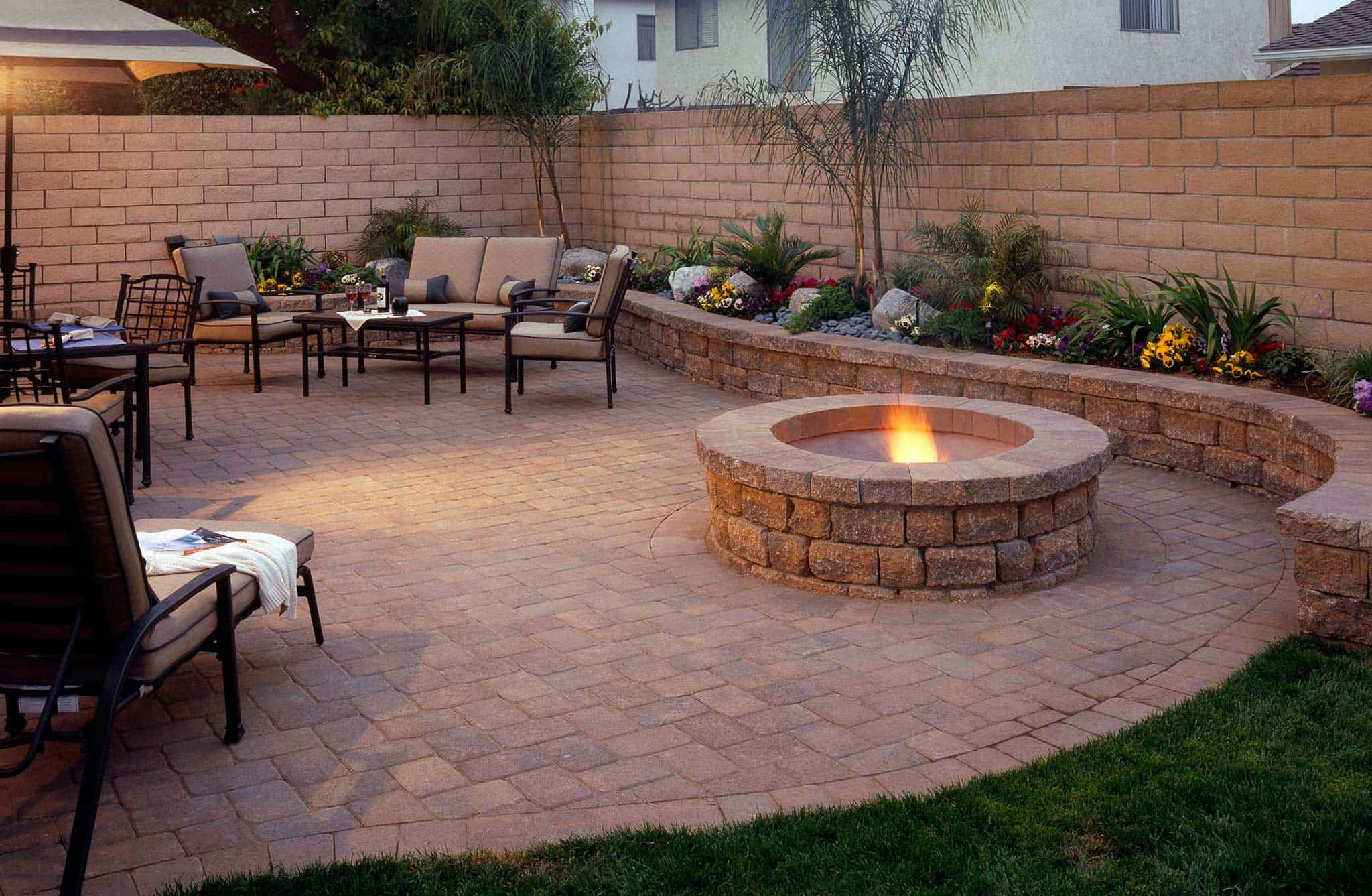Hampshire is a county of contrasts: chalk downs around Winchester, clay commons edging the New Forest, shingle-spiked Solent coastlines, and river-laced valleys near Andover and Test Valley. Those soils, slopes, and salt breezes place unique demands on hard landscaping. A patio that lasts in Oxfordshire might puddle or flake here after a single winter. Planning patios Hampshire style therefore starts with understanding two things: your micro-climate and your ground conditions.
Know Your Ground Before You Order a Slab
| Area | Typical Sub-Soil | Key Risk | Smart Counter-Measure |
|---|---|---|---|
| Coastal strip (Gosport, Southsea) | Sand over chalk or silt | Salt splash, wind-blown sand eroding joints | Dense porcelain or flame-textured granite; resin-based pointing |
| Central chalk belt (Winchester, Alresford) | Free-draining chalk & flint | Joint shrinkage, glare on pale stone | Mid-tone slabs; polymeric jointing that stays elastic |
| Clay zones (Basingstoke fringe, Eastleigh, New Forest) | Heavy clay, high water table | Winter heave & summer shrink | 150 mm sub-base + geotextile + permeable edging drains |
| River terraces (Romsey, Test valley) | Gravels & loams | Flash flooding during downpours | Soakaway crate beneath patio linked to French drain |
Spend £40 on a soil test kit or call a local landscaper for a core sample—it’s cheaper than relaying 30 m² of stained sandstone next year.
Six Material Options Tailored to Hampshire Conditions
| Material | Best Use Case | Pros | Watch-outs |
|---|---|---|---|
| 20 mm porcelain | Modern extensions, windy coastal plots | Frost-proof, stain-proof, minimal upkeep | Must sit on a full-bed adhesive and slurry primer |
| Indian sandstone (premium grade) | Cottage gardens inland | Warm hues, economical, easy to curve | Needs annual sealing in salty air; watch for calibration variance |
| Flamed granite | High-traffic courtyards, drive-ups | Hard-wearing, salt-resistant, slip-safe | Dark colours show efflorescence if bedding not drained |
| Reclaimed Purbeck & York stone | Listed buildings, barn conversions | Instant heritage, very durable | Heavy, labour intensive, limited stock—order early |
| Composite decking tiles | Roof terraces, quick revamps | Rot-proof, fast install, timber aesthetic | Thermal movement—leave expansion gaps |
| Resin-bound gravel | Path margins, SuDS compliance | Fully permeable, smooth for wheelchairs | Needs solid concrete/tarmac base; UV-stable resin costs more |
Blending two materials—say, a porcelain dining pad edged with granite setts—breaks up large rectangles and echoes Hampshire’s mixed brick-and-flint architecture.
Drainage & Sub-Base: The Unseen Hero
-
Excavation depth: 150 mm on chalk, 180–200 mm on clay or reclaimed infill.
-
Geotextile membrane: stops clay pumping into hardcore, preventing sinkage.
-
Type 1 MOT hardcore: compact in 50 mm layers; consider recycled crushed concrete for eco credit.
-
Fall: minimum 1:80 (12 mm per metre) away from the house toward lawn, drain channel or soakaway.
-
Full-bed laying: dot-and-dab voids trap frost; always use a continuous mortar or adhesive bed.
Skipping proper compaction is the single biggest cause of rocking slabs after Hampshire’s first freeze-thaw cycle.
Permissions and Paperwork in Plain English
-
Permitted Development: Most ground-level patios are fine—unless covering >50 % of your garden with impermeable surface.
-
SuDS Rules: If runoff heads for road drains, choose permeable joints, add a linear channel into a soakaway, or switch to resin-bound gravel.
-
Conservation Areas & National Parks: Extra design scrutiny applies within the South Downs and New Forest; natural stone or earth-tone porcelain usually passes.
-
Listed Buildings: Any new hardstanding attached to the fabric of the house can require listed-building consent—phone the parish planning office before laying a single flag.
Doing the paperwork first costs nothing; ripping up non-compliant work can cost thousands.
How to Choose a Hampshire Patio Installer
-
Local portfolio: Ask for three addresses finished at least a year ago—coastal, clay, chalk if possible. Inspect joints and colour fade.
-
Written quote with line items: labour, materials, aggregates, waste disposal, VAT. Skip any “all-in” handshake price.
-
Manufacturer approval: Marshalls, Bradstone, Talasey, and Brett run installer schemes that audit workmanship.
-
Insurance & guarantees: £5 m public liability and five-year workmanship guarantee are county-standard.
-
Waste chain-of-custody: Hampshire councils fine for fly-tipped rubble. Reputable firms supply transfer notes for hardcore and soil.
Book early: the best landscapers fill spring and summer slots by January.
2025 Cost Benchmarks (Labour + Materials, ex-VAT)
| Project | Coastal | Inland chalk | Clay belt |
|---|---|---|---|
| 18 m² porcelain patio, basic square | £2,900–£3,400 | £2,700–£3,200 | £3,100–£3,600 |
| 30 m² Indian sandstone with two steps & LED risers | £4,300–£4,900 | £4,100–£4,700 | £4,600–£5,200 |
| 45 m² reclaimed York stone, curved edge & soakaway | £7,800–£8,800 | £7,400–£8,400 | £8,200–£9,200 |
Coastal premiums stem from stainless fixings, salt-resistant sealers, and wind-risk logistics.
After-Care: Five Habits for a 20-Year Patio
-
Monthly sweeping: salt crystals and leaf tannins etch porous stone.
-
Low-pressure jet-wash each spring: rotary head, not needle jet, to spare pointing.
-
Re-seal porous slabs: every 18–24 months on the coast; every 30 months inland.
-
Check joints post-freeze: hairline cracks let ants and moss colonise—repoint early.
-
Shuffle furniture & pots: avoids moisture rings and UV shade patches.
An hour each quarter beats a £2,000 re-pointing bill in ten years.
Design Trends Gaining Traction Across Hampshire
-
Outdoor porcelain ‘planks’ laid in herringbone, echoing indoor luxury vinyl floors.
-
L-shaped kitchen islands with sintered-stone worktops and retractable awnings for drizzle-proof grilling.
-
Pollinator jointing strips: 30 mm bands of thyme or low-growing chamomile between larger porcelain sections.
-
Gabion benches packed with local flint—functional retaining walls plus seating.
-
Wireless, app-controlled LED pavers that change colour for summer parties, powered by 24 V transformers tucked under steps.
Final Word
Patio dreams succeed or fail in the first 48 hours of planning—soil test, drainage plan, material match—and in the craftsmanship of the people laying it. Respect Hampshire’s varied geology and sea-air quirks; insist on full-bed installation, surplus drainage, and a maintenance schedule you’ll actually follow. Nail those basics and “patios Hampshire” will stop being a search term and start being the stage for breakfasts in spring sunshine, evening fire-pits, and decades of low-stress outdoor living.



